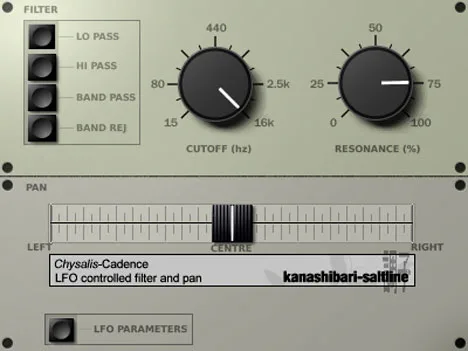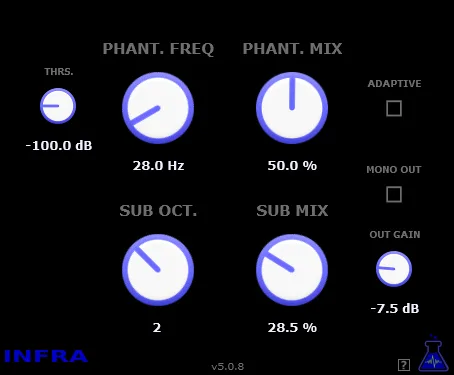Cadence by Saltline: Dynamic Movement for Your Sounds
Looking for a way to add life and movement to your static audio signals? Want to create rhythmic filtering, pulsating panning, or evolving textures? The Cadence plugin from developer Saltline offers exactly these possibilities, combining filter functionality and stereo panning under the control of powerful low-frequency oscillators (LFOs). This free VST effect will be a great addition to the arsenal of any musician or sound engineer, allowing you to easily breathe dynamism into your tracks.
Cadence is specifically designed for those who value flexibility and intuitive control. Thanks to synchronization with the tempo of your project in the DAW, you can create perfectly synchronized effects that fit harmoniously into the overall rhythm of the composition. Forget about boring static sound – with Cadence, every sound can breathe and change over time.
Key Features of Cadence
This compact but functional plugin is equipped with a number of features that open up wide horizons for sound design and mixing:
- Variable-state filter: The heart of Cadence is a high-quality variable-state filter that can operate in self-oscillation mode. This means that you can use it not only to process existing sound, but also to generate your own tones, adding experimental elements to your mixes. The filter offers classic operating modes, allowing you to shape tonal balance and add character.
- Simple stereo panning: In addition to the filter, Cadence includes a convenient slider for stereo panning control. Although it seems simple, when combined with the LFO for panning, it becomes a powerful tool for creating voluminous and moving stereo images.
- Two LFOs with host synchronization: The plugin is equipped with two independent low-frequency oscillators. Most importantly, both LFOs can be synchronized with the tempo of your sequencer (DAW). This allows you to create effects that precisely match the rhythmic grid: from fast sixteenth-note modulations to slow, evolving changes over bars. The LFO sync range is impressive – from 1/64 note to 8 bars (accuracy depends on the specific value in the range from 1-64 to 8-1, where it is likely to be a division from 1/64 to 1/1 and a duration from 1 bar to 8 bars).
- Flexible filter LFO routing: The LFO designed to control the filter offers a choice of modulation target. You can independently modulate the filter cutoff frequency, its resonance, or affect both parameters simultaneously. This allows you to create both classic “wah-wah” effects and more complex, dynamic timbre changes.
- Five LFO waveforms: Five different waveforms are available for each of the two LFOs: sine, saw, pulse, triangle, and ramp. Each waveform has its own unique character and effect on the modulation, allowing you to experiment with different types of movement – from smooth and organic to sharp and rhythmic.
Creative Applications of Cadence
Due to its functionality, Cadence can be used in a variety of scenarios:
- Creating “bouncing” bass lines or pads using rhythmic filtering synchronized with the kick drum.
- Adding space and movement to guitar parts or synthesizer sounds through automated panning.
- Forming unique sound effects for transitions or intros, using filter self-oscillation and extreme LFO settings.
- Revitalizing vocal parts or samples, adding subtle, slow modulations of timbre or position in the stereo field.
The Cadence plugin from Saltline is an example of how even free tools can be incredibly powerful and versatile. Its ease of use combined with deep modulation capabilities makes it a valuable asset for creating modern music of any genre. If you are looking for a reliable and creative tool to add dynamism and movement to your mixes, Cadence definitely deserves your attention. Try it and feel your sounds come to life!



